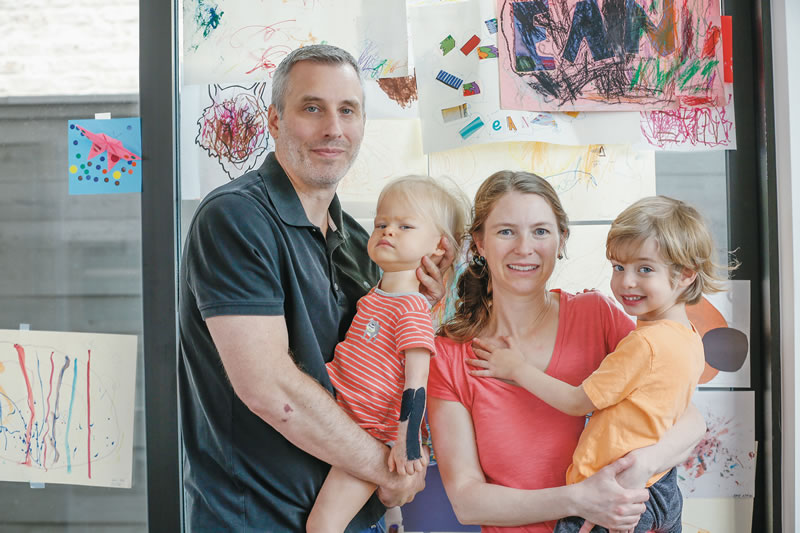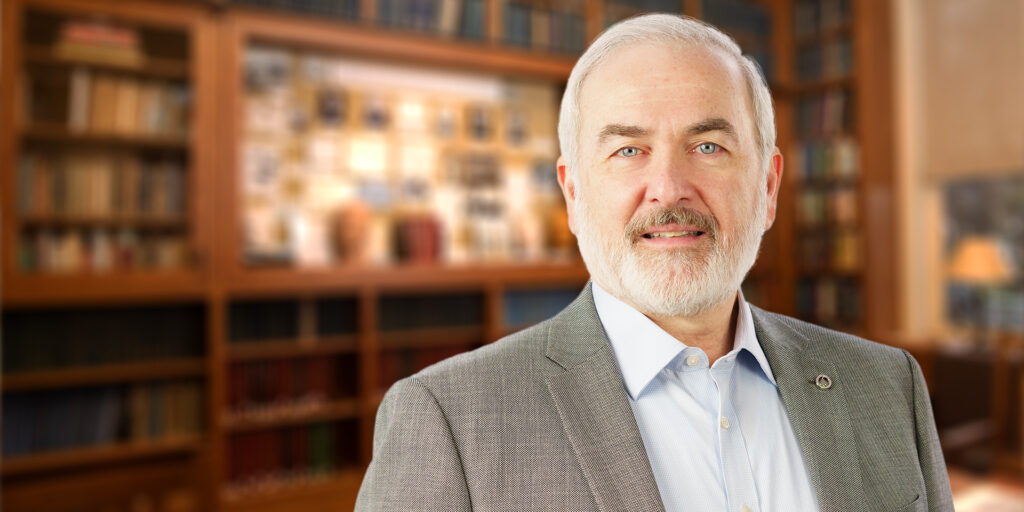
One in a Million
By Debra Gordon | Friday, August 20, 2021
All the neuromuscular diseases MDA covers are considered rare, meaning they affect fewer than 1 in 20,000 individuals. But within each of those diseases, there are dozens of subtypes defined by the genetic mutations that cause them. Many, if not most, are considered ultra-rare, affecting fewer than 1 in 50,000.
For instance, Vici syndrome, which is marked by abnormal brain development as well as muscular weakness, has been diagnosed in just 100 children in the world. HACD1 congenital myopathy has been described in only five individuals.
“I’d say more than 80% of neuromuscular diseases fall into the ultra-rare category,” says Sharon Hesterlee, PhD, MDA’s chief research officer. “We say that MDA covers more than 43 neuromuscular diseases, but it’s really 43 categories encompassing hundreds of diseases if you start parsing them genetically.” (To learn how genetic disorders work, read “Genetics and Neuromuscular Disease,” in English or Spanish.)
That makes it challenging to develop therapies. For instance, until recently, the US Food and Drug Administration (FDA) required investigational therapies for extremely rare diseases to meet the same complex requirements of any drug. Finding enough patients for a clinical trial can be difficult, particularly if they are scattered around the world. Even understanding the disease and how it progresses over time — which is critical for determining what “success” looks like in a clinical trial — can be elusive when so few people have the disease.
Practical considerations
MDA does not base its funding on the prevalence of a disease, nor does the National Institutes of Health (NIH). But large pharmaceutical companies often do. “A small number of patients doesn’t mean it costs that much less to develop the drug,” Dr. Hesterlee says.
On average, it costs more than $100 million to bring an “orphan” drug to market. Orphan drugs are defined as those designed to treat diseases that affect fewer than 200,000 patients. Pharmaceutical companies are often reluctant to pursue such therapies because it is difficult to recoup the cost of development. Thus, in 1983 Congress passed the Orphan Drug Act, which provides additional incentives to develop drugs for these diseases, including extended market exclusivity, tax credits, and federal research grants.
However, those incentives aren’t always enough when it comes to ultra-rare diseases. “As things stand, it’s challenging for companies to make the numbers work for diseases that affect very small numbers of people,” Dr. Hesterlee says.
That’s why MDA is committing to developing a pathway to get biotech companies interested in bringing novel therapies for these extremely rare diseases to market. “That means aligning the right incentives and having clear requirements in place,” Dr. Hesterlee says. Potential options include tax credits, less onerous clinical trial requirements, and more public/private partnerships.
Promising progress
Families coping with ultra-rare diseases can feel frustrated as they see therapies developed for more prevalent neuromuscular diseases, like Duchenne muscular dystrophy (DMD) and spinal muscular atrophy (SMA). But there is a lot of positive news on the ultra-rare front.
Many smaller biotech companies are pursuing treatments for ultra-rare neuromuscular diseases. For instance, Leadiant Biosciences, together with the NIH, has a clinical trial underway to test a drug for the treatment of GNE myopathy, also known as Nonaka distal myopathy, an extremely rare progressive muscle disease caused by mutations in the GNE gene. Astellas Pharma Inc. and Dynacure are working on treatments for X-linked myotubular myopathy, and the first drug for primary hyperkalemic and hypokalemic periodic paralysis, developed by Taro Pharmaceutical Industries Ltd., was approved in 2015.
In addition, scientific advances often translate across diseases. “The methods and platforms used to develop drugs for diseases like DMD and SMA have high promise to be applied to the super rare diseases,” says Alan H. Beggs, PhD, who directs the Manton Center for Orphan Disease Research at Boston Children’s Hospital (BCH).
Seng Cheng, PhD, senior vice president and chief scientific officer of the Rare Disease Research Unit at Pfizer, can point to several examples where this occurs. For instance, a gene therapy platform developed for DMD is being leveraged for other, rarer neuromuscular diseases, such as limb-girdle muscular dystrophies (LGMDs).
Another example lies in the development of animal models to test therapies for ultra-rare neuromuscular diseases. Pediatric neurologist Jim Dowling, MD, PhD, a senior scientist of genetics and genome biology at SickKids Hospital in Toronto, along with his team, pioneered the use of zebrafish as an animal model of disease to study X-linked myotubular myopathy. Today, zebrafish are used to understand disease mechanisms and identify therapies for numerous other neuromuscular diseases.
Indeed, talk to researchers of ultra-rare diseases and you hear optimism. “The barriers are really coming down,” Dr. Dowling says, thanks to support from organizations like MDA and the strong interest of families who are eager to enroll their children in clinical trials and provide strong advocacy for research. “It’s no coincidence that some of the diseases that are moving forward have very active advocacy groups,” he says. “Without that, nothing moves forward.”
Dr. Dowling also highlights the strong community of researchers dedicated to these diseases. “There is this feeling that we’re in it together to advance the treatments and care for patients who are traditionally underserved.” In fact, he points to three ongoing clinical trials for X-linked myotubular myopathy now underway as a result of such collaboration.
Finally, Dr. Dowling is encouraged by growing support in the pharmaceutical industry, noting that two of the X-linked myotubular myopathy trials are industry-sponsored. This involvement is critical. “It’s hard to point to diseases with therapeutic advancements in which there hasn’t been industry involvement in some way,” Dr. Dowling said.
But pharmaceutical companies shouldn’t be the only funding partner. For instance, MDA, the NIH, the Myotubular Trust, the Canadian Institutes of Health Research, CuresWithinReach, and the Will-Cure and Joshua Frase foundations have supported aspects of Dr. Dowling’s research related to the potential benefits of the breast cancer drug tamoxifen for myotubular myopathy. “It really does take a village to help get a drug into clinical trials,” he says.
Gene-targeted therapies
Another reason for optimism is that pinpointing the genetic variants responsible for diseases is far easier these days than it was even five years ago. In the “old” days, Dr. Beggs says, finding the genetic variant responsible for a disease was akin to looking for the proverbial needle in a haystack.
Enter whole genomic sequencing, which can quickly and accurately search the “haystack,” or strings of DNA sequences, to find the “needle” — the genetic variant. Without that information, gene-targeted therapies cannot be developed.
The NIH is working to promote more research into ultra-rare diseases with its Bespoke Gene Therapy Consortium, a public-private partnership devoted to fostering the development of gene therapies to treat very rare genetic diseases in populations considered too small for commercial development. Initiatives include developing a standard operational playbook for developing such therapies, with the ultimate goal of speeding these treatments to those who need them.
Today’s genetic therapies open a world of possibilities. These include antisense oligonucleotides (ASOs), which have multiple potential applications. Eteplirsen (Exondys 51), approved for DMD, and nusinersen (Spinraza), approved for SMA, are ASOs. These snippets of genetic material can direct mutated or backup genes to make the proper protein. Similar compounds can be personalized based on the patient’s individual genetic mutation.
That happened at BCH, where researchers developed an ASO to treat a 6-year-old girl with a rare form of Batten disease, in which toxic substances build up on the brain, causing a plethora of symptoms and greatly shortened life expectancy.
The girl was the only person in the world with her specific genetic mutation. Within a year, the BCH team had developed an ASO called milasen (the patient’s name was Mila) and, with the help of industry advisors, commissioned it to be manufactured. Even more amazing was that the FDA, for the first time ever, allowed them to test a new drug created for a single patient. While the drug didn’t reverse Mila’s condition, it provided some benefits. Her swallowing and muscular function improved, and her seizures virtually stopped. She survived to age 10.
Mila’s case shows the potential of using individualized therapies for these ultra-rare diseases. “It’s one of the first examples of going all the way from the discovery of something new to the design and development of a new drug, assessing safety, testing it, and then actually using it,” says Dr. Beggs.
Advances in ASOs spurred the creation of the nonprofit n-Lorem Foundation in 2020, dedicated to developing individualized ASOs for genetic diseases that affect fewer than 10 people in the world — even just one person. The foundation, led by the founder of Ionis Pharmaceuticals, which co-developed Spinraza for SMA, is pursuing drugs for several neuromuscular diseases and plans to provide lifetime treatment at no cost, covering the expenses through donations and support from the pharmaceutical industry.
Such genetic treatments might only be able to treat a relatively small percentage of patients with neuromuscular disease, “but this is still a group of people who never would have had any hope of treatment previously,” Dr. Beggs says. “Now, there is hope.”
Debra Gordon is a freelance medical writer based in Norfolk, Va. She has covered the intricacies of medicine and the US healthcare system for more than 30 years.
One Family’s Journey to Supporting Rare Disease Research
Austin Corman is like most toddlers: He loves to play and has strong opinions he’s not afraid to voice. “He’s joyful,” says his mother, Hannah.
But Austin can’t sit up, crawl, or pick up large toys, because he has LMNA-related congenital muscular dystrophy (L-CMD), an extremely rare neuromuscular disease found in less than 1 in 1 million people.
The condition affects the gastrointestinal, cardiovascular, and skeletal muscles, creating difficulties eating, breathing, and walking. Austin’s doctors couldn’t say how long he would live. But his parents weren’t willing to leave it at that. “We wanted to see what we could accomplish if we put our minds to it,” says Austin’s father, Mark.
To begin, Mark read more than 1,000 journal articles about the gene responsible for Austin’s condition, while Hannah started the L-CMD Research Foundation and a GoFundMe page to raise money for research. By early summer 2021, they had raised nearly $1 million. They also connected with MDA and numerous parent-led advocacy groups for rare diseases, and they reached out directly to researchers. Now, they are not only funding research but helping researchers connect with resources and each other to further their research.

From left: Mark, Austin, Hannah, and Ean Corman
Among the researchers they support are Ignacio Pérez de Castro, PhD, at the Instituto de Salud Carlos III in Madrid, who is studying the LMNA gene; Miguel Sena-Esteves, PhD, at the University of Massachusetts Medical School, who is developing genetic therapies for rare diseases; Anne Bang, PhD, at the Sanford Burnham Prebys Medical Discovery Institute in California, who is screening FDA-approved drugs to see if any might be effective for Austin’s disease; FarBiotech in Texas, which is partnering with Dr. Bang to identify additional drug candidates; the Canadian biotech company Modelis, which created animal models of the disease in worms and zebrafish; and Rarebase, a California biotech company that is looking at Austin’s tissues to analyze protein expression.
“We’re hopeful that we may find something that is helpful in the short-term, which could buy us some time, and in the long-term we hope that there will be gene therapy,” Mark says.
“If we can extend Austin’s life and give him the best opportunity to enjoy his life, that would be wonderful,” Hannah says. “We know there are no guarantees, but we feel that we’re here to try — if not for Austin, then for the kids who come after him.”
Next Steps and Useful Resources
- Read about how MDA’s Kickstart program launched a pilot project to develop a gene therapy for an ultra-rare type of congenital myasthenic syndrome (CMS).
- Stay up to date on Quest content! Subscribe to Quest Magazine and Newsletter.
TAGS: Drug Development, Featured Content, Fundraising, Gene Therapy, Grants, Research, Research Advances
TYPE: Featured Article
Disclaimer: No content on this site should ever be used as a substitute for direct medical advice from your doctor or other qualified clinician.




